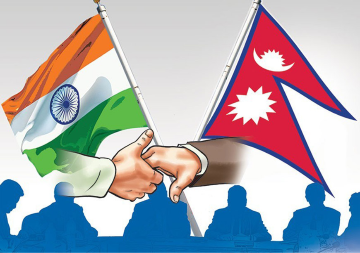 This is the second part in a two-part series. Read part 1.
This is the second part in a two-part series. Read part 1.
Why now?
For a while it appeared as if the disputed China-India border was stabilising. The last major crisis at the LAC, the Sumdorong Chu incident, dates back to 1987 and involved a major military buildup by both sides. That crisis was resolved without any casualties but it was alarming enough to galvanise diplomatic efforts to create a framework for managing the border dispute, producing a series of productive agreements between 1993 and 2005.
Momentum was lost shortly afterward. China refused to exchange maps delineating its precise territorial claims and began emphasising its claim on the sensitive border town of Tawang, an issue India believed had been settled by prior agreements. Meanwhile, the broader relationship witnessed a gradual slide toward more competition and rivalry as China adopted a more assertive approach to its territorial disputes.
Nevertheless, the border remained relatively stable until the prolonged standoff in Ladakh in 2013. Ironically, that episode prompted the two sides sign a modest Border Defence Cooperation Agreement in late 2013 but in the seven years since, tensions at the LAC have only worsened.
The current crisis, and the elevated tensions along the LAC more broadly, are likely the product of two complementary trends. The first is the well-documented sharpening of Chinese foreign policy under President Xi Jinping, particularly along China’s territorial fault lines.
The border remained relatively stable until the prolonged standoff in Ladakh in 2013. Ironically, that episode prompted the two sides sign a modest Border Defence Cooperation Agreement in late 2013 but in the seven years since, tensions at the LAC have only worsened.
The second trend is an acceleration of Indian infrastructure development near the LAC in an attempt to close a substantial deficit with China there. Roughly a decade ago the Indian government took a decision to reverse a decades-old policy of intentional neglect at the border, a naïve attempt to deter advances from a potential invader. After years of delays and glacial progress, the Modi government reinvigorated efforts at road building along the LAC. Work on a network of 61 “strategic roads” has accelerated in recent years, with an expected completion date of December 2022.
It is perhaps no coincidence that in April 2019 India completed work on the critical DSDBO road running parallel to the LAC in Ladakh, stretching all the way to its northernmost outpost at Daulet Beg Oldi. More recently, India began building east-west feeder roads from DSDBO to its forward outposts near the LAC, including a new road and bridge near the Galwan river. This year, India was also reportedly engaged in efforts to improve road infrastructure at Pangong Lake.
With infrastructure development near the LAC the proximate cause of the Ladakh standoffs in the mid-2010s, the most likely explanation for recent events is that China is again attempting to pressure India to halt infrastructure activities. Indeed, that is exactly how the Global Times characterised the recent crisis: “China-India border tensions flared up after India recently illegally constructed defense facilities across the border into Chinese territory in the Galwan Valley region, and Chinese border defense troops countered.” When Chinese and Indian military commanders met for negotiations on 6 June, India reportedly requested a return to the status quo as of April 2020. China’s request? A halt to Indian infrastructure near the LAC.
With infrastructure development near the LAC the proximate cause of the Ladakh standoffs in the mid-2010s, the most likely explanation for recent events is that China is again attempting to pressure India to halt infrastructure activities.
Past experience and Occam’s razor suggests wolf warrior diplomacy has seized the day: if India refuses to heed China’s calls to desist with its infrastructure, the PLA will apply military pressure and force upon India a fait accompli. It closely resembles China’s playbook from prior standoffs in Ladakh, only this time on steroids: more troops, more equipment, more locations, more pressure, and one potentially bold attempt to change the status quo at Pangong Lake.
A dubious strategy?
If China is drawing from a familiar playbook at the LAC, it’s important to ask why its efforts appear supercharged this time around.
With China under economic duress and facing greater international scrutiny over the COVID-19 pandemic, it would seem an inopportune time to open a contentious new front with India. Yet, since the outbreak of the pandemic China has sparred with Malaysia and Vietnam in the South China Sea, threatened Taiwan, revoked Hong Kong’s autonomy, chased Japanese fishing boats, traded barbs with the US and is now challenging India at the LAC. The Chinese leadership appear to be willing to accept the costs of heightened tensions with their neighbors in order to broadcast an aura of strength to domestic audiences. (Although it’s worth noting India doesn’t figure prominently into the CCP’s domestic messaging so it would appear to have limited domestic propaganda value.)
Others have speculated that China is irritated with: recent moves by Delhi to restrict Chinese investments in the Indian market; calls by Indian voices to hold China to account for its responsibility in the COVID-19 pandemic; India’s accelerating partnerships with the US; and the Indian government’s decision to revoke Kashmir’s statehood in August 2019. That decision, which created the new union territories of Jammu and Kashmir, and Ladakh, had no material impact on India’s territorial claims or the border dispute with China. Beijing objected to the move at the time, though its complaints were believed to be more symbolic in nature and in deference to its all-weather friend, Pakistan. Although it’s still unclear precisely how that decision was interpreted by Beijing and how it may be influencing China’s calculus at the LAC.
Since the outbreak of the pandemic, China has sparred with Malaysia and Vietnam in the South China Sea, threatened Taiwan, revoked Hong Kong’s autonomy, chased Japanese fishing boats, traded barbs with the US and is now challenging India at the LAC.
Even as we contemplate Beijing’s potential motivations, there’s good reason to question the wisdom and efficacy of China’s coercive strategy at the LAC. First, India appears to be on firmer legal ground. There is a general consensus that the Indian infrastructure construction along the DSDBO road and elsewhere has been proceeding on its side of the LAC.
Second, India also has a history of resisting Chinese coercion tactics, staring down the PLA less than two years ago near the Bhutan-China-India border and refusing budge under threat of eviction. Indian officials are already signaling privately there will be no halt to planned infrastructure improvements near the LAC.
Third, while China clearly has some interest in maintaining a favorable military balance at the border, its tactics directly undermine its broader strategic objectives with India. It is no coincidence Delhi agreed to the revival of the Quad three months after the 2017 Doklam crisis. India signed a key military agreement with the US the following year, with negotiations reportedly invigorated by the standoff. If history is any guide, China’s actions at the border are likely to entrench feelings of distrust and hostility already rampant in India, and strengthen the impetus to partner with other Indo-Pacific democracies.
Looking ahead
With signs of de-escalation at several points along the LAC, the focus will soon shift to the ongoing standoff at Pangong Lake, with India seeking a return to the pre-May status quo. If China remains entrenched in its forward position India has numerous avenues to respond horizontally. It has a major decision pending on the development of its 5G telecommunications infrastructure and the Chinese Communist Party is desperate to see its loyal telecom firm Huawei gain access to one of the world’s largest markets.
If China remains entrenched in its forward position India has numerous avenues to respond horizontally.
Elsewhere, India has numerous policy options, from deepening engagement with the Quad to welcoming Australia’s participation in Malabar, helping to hold China accountable for its responsibility in the COVID-19 pandemic, elevating engagement with Taiwan, and more vigorously supporting freedom of navigation in the South China Sea. There are also outstanding questions regarding the Tibetan Government in Exile and the Dalai Lama’s succession. The ball is now in China’s court.
The views expressed above belong to the author(s). ORF research and analyses now available on Telegram! Click here to access our curated content — blogs, longforms and interviews.



 This is the second part in a two-part series.
This is the second part in a two-part series.  PREV
PREV


